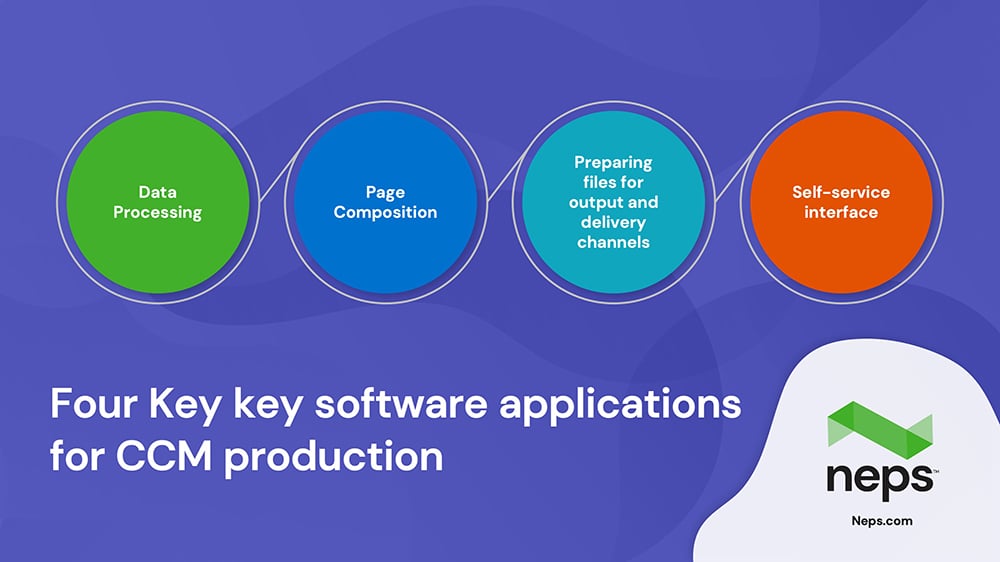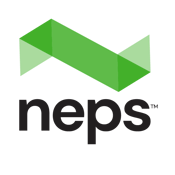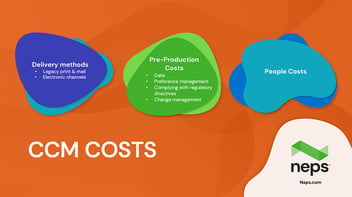Customer Communication Management Software Overview
Notice :
Neps and Venture Solutions are now a singular CCM powerhouse.
© NEPS.com
What are the key software solutions for CCM production?
The most successful software solutions include software that manages production re-services, achieves 100% fulfillment, tracks individual mail pieces as they go through production for verification purposes, and allows you to search for and view individual archived electronic documents.
While each of these solutions are essential, we’ll focus on software that manages the front-end processes of CCM production: data processing, page composition, file creation for output, and human interaction.
Static and Variable Data:
To better understand the software required for front-end processing, it’s important to recognize the two fundamental types of data in CCM documents: static content and variable content. A document’s static content is universal to all document recipients, whereas the variable content is the personal information, whether that be name and address, account information, an invoice total, or an explanation of medical insurance benefits.
In the not so distance past, static content was printed to create a base stock on which the variable content would be imprinted. This added additional steps, and thus time and cost, to the CCM production value chain. Today, static content is printed dynamically along with the variable content. This digital transformation was made possible by inkjet digital printers capable of adding color closely mimicking four-color process lithographic printing, including meeting a company’s branding requirements. This transformation has saved companies significant money, as well as expedited their go-to-market timetables.

Consequently, managing modern CCM production programs requires managing the interplay between static and variable content, which we’ve condensed into four key software applications:
- Data Processing: The variable data used in CCM programs requires significant processing. A company, for instance, will draw its variable content from several data sources to produce invoices, statements, letters, and tax documents. Sophisticated software must ingest data from these sources—often with varying file formats and data layouts—and standardize it to meet both CCM document specifications and delivery channel requirements.
- Page Composition: Page composition manages the interplay between static and variable content, programming where and how variable content mixes with static content within what is most commonly your standard 8.5x11 page. The highly variable amount of content from one document to the next is among the most difficult challenges within page composition. A bank statement, for example, may be two pages for one customer, five for another, and eight for a third. Composition software calculates how much content to place on one page, including graphics and statement sections, before moving onto the next.
Of course, given the quick deadlines imposed on most CCM communication, this processing step needs to be automated in order to compose millions of pages in a matter of minutes. Any sort of human intervention risks lapsed deadlines and higher costs. It’s a complex task that requires a high level of business analysis and programming skill, and the components that determine how a page is composed need to be programmed and tested prior to live processing. These include regulatory directives, a company’s directives and business rules, and basic principles of graphic design and brand requirements.
Over the past fifteen years, few software solutions have bested this technological feat and have become the go-to solutions for handling variable content composition. These include Quadient Inspire and OpenText Exstream. A top-tier CCM service provider will utilize these solutions along with expert users who optimize their capability. - Preparing files for output and delivery channels: Currently, there are four primary output channels for customer communication:
• Print and mail, which is delivered through a combined effort of a print production service provider and the United States Postal Service
• Email, which is delivered through Internet Service Providers
• SMS text, which is delivered by major telecoms, like Verizon and AT&T
• Online viewing, which is typically delivered as part of a company’s portal solution, such as its website or online banking solution, in conjunction with email and SMS text
Each of these output and delivery methods have their own requirements for the production file sent to them. The print and mail channel needs files that can "talk" to the digital printers. Email and SMS text need files that are consistent with their electronic delivery infrastructure. Online viewing, files that can be placed into an archive and searched. In our preference-driven consumer environment, a program that delivers communications like monthly invoices needs to create separate output files for all four channels. As with page composition, the output file creation has to be fully automated, with considerable business analysis, programming, and testing done prior to creating the file. - Self-service interface: While the first three software solutions hinge their success upon automation, there remains the need for occasional human assessment and intervention during the pre-production phase. This may mean removing some records from the input file, or adding an ad hoc last-minute message to a document, or receiving alerts when something non-standard occurs during the pre-production process. Beyond the pre-production process, a document template may need changing between production runs or undeliverable mail and bad addresses amended.
In these instances, a software solution provides the necessary functionality and automation integration. Top-tier CCM providers such as Neps have priority solutions integrated with solutions from Quadient and OpenText.
The Need for a Platform
While these four early-stage steps of the CCM workflow contribute individually to the success of document production, their optimized value comes from integrating them into one seamless, integrated solution. When a platform is itself a software solution, it is able to blend the four steps into a whole program.
Using a top-tier platform to manage the pre-production CCM workflow, as well as other tasks, is the current best practice in the CCM industry. A top-tier platform such as Neps’ NSite™ is able to:
- Integrate software solutions that process input data, composes variable content pages, and outputs a file to mail, email, and SMS text output producers
- Monitor how the tasks are proceeding via dashboard, keeps the workflow moving between steps, and provides alerts and reports when there are problems
- Provide online self-service engagement with business rule programming and templated content at any time from any location
- Create files of each document in its original form for archiving and future reference
We invite you to learn more about CCM platforms in our blog post on the subject.
Conclusion
While most people focus on CCM output—mail pieces, email, texts—the real battle is dealing with the complexity of data, page composition, and production requirements; where the CCM production game is won and lost. To ensure your company is among the victors, it’s crucial to find the correct partner who can automate the pre-production process while still allowing you to intervene as needed.
Neps is among those valued partners. It offers not only the software and technology to win the pre-production battle but offers client support and expertise from people who have been doing this work for over twenty years. Whether the ultimate resolution is with Neps or elsewhere, we invite you to contact us to discuss your CCM enterprise program.



